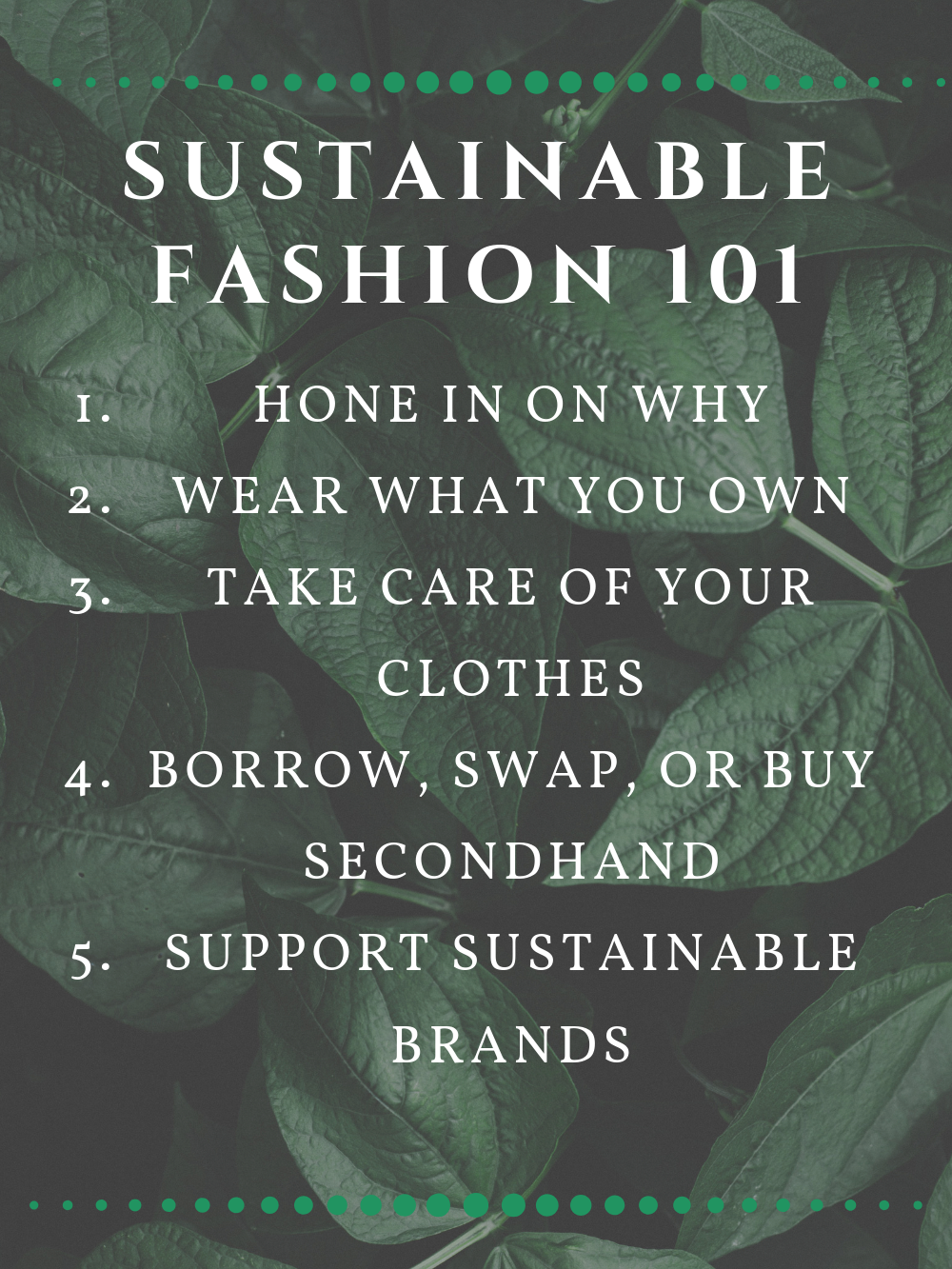A Beginner's Guide to Sustainable Fashion
If you don’t know by now, fast fashion is wrecking the world.
Not only is it disastrous for the environment, but it’s an issue that perpetuates inequality, especially for women in developing countries.
Here are a few facts to get you centered on the severity of this issue:
The global apparel and footwear industry accounts for 8% of the world’s greenhouse gas emissions, releasing 4 metric gigatonnes of CO2 into the atmosphere (Quantis 2018)
More than 50% of the emissions from clothing production comes from three phases: dyeing and finishing, yarn preparation, and fibre production (Quantis 2018)
80% of garment workers around the world are women in their early 20s (International Labour Organization 2015)
Most garment makers are paid FAR below living wages, ranging from $97 USD/month in Bangladesh to $6/hr in the US (Fair Labor Association 2019, LA Times 2017)
North Americans is the largest consumers of new textiles, consuming 37kgs each. (Textile Beat 2016)
Approximately 300 million people who produce cotton are still living in poverty. (Fairtrade 2017)
So what is fast fashion and what can we do about it?
Fast fashion describes the rate at which fashion designs move from concept to fashion products in retail stores. It’s usually characterized by the high volume, low margin rate at which cheap, disposable, articles of clothing are produced.
The most impactful thing we can do is decrease our rate of consumption. Combat the fast fashion industry by wearing the items you own for longer and choosing to spend your money wisely. Although they’re not entirely related, minimalistic fashion tools, such as the capsule wardrobe, can help you to provide a structured way of creating a wardrobe that you love and will wear for years.
I know it’s intimidating to make such a huge lifestyle shift (I’ve been actively on this journey for a year and there’s still so much for me to learn), but here are some quick tips to help you get started.
1. Hone in on the why.
Why is this important to you? What kind of impact do you want to make on this world?
This journey’s going to be challenging and the cost of convenience is everywhere. When you’re out and suddenly the temperature drops but you forgot a coat, you’re going to be tempted to purchase that $10 jacket to get you by.
Tapping into WHY this matters will help you stay motivated and focused on the end goal.
2. Wear what you own.
When you decide to quit fast fashion, it’s tempting to scrap your entire wardrobe and replace it with sustainable clothes. The best thing to do, however, is to work with what you’ve got.
The biggest problem with fashion right now is the rate at which we’re producing and discarding clothes. Counter that by wearing the clothes that you own and taking good care of them.
Sometimes, wearing the same clothes can get boring. Challenge yourself by styling things in new and unique ways or participating in style challenges like the Style Bee’s 10 x 10 challenge. You can draw inspiration from your fellow participants and also build a community with those who have the same values and experience the same challenges.
3. Take care of your clothes.
Those little care tags have a purpose! Read them and abide by what they prescribe. Air dry when you can; it saves energy and keeps your clothes from prematurely wearing out. Good On You has a comprehensive guide that summarizes how you can make your clothes last longer. Additionally, learning to sew can be helpful so that you can mend simple holes and make small alterations.
4. Borrow, swap, or buy secondhand.
Wearing the same clothes over and over again can get pretty drab. I get it. 😔 Some fantastic alternatives to purchasing new clothes include borrowing items from a close friend/sibling, swapping clothes with others in your area, or even shopping secondhand!
A quick google search for “(Your City) Clothing Swaps” can provide upcoming events in your area. Heads up New Yorkers, @HowToBeBrokeInNewYork is hosting a clothing swap THIS THURSDAY, June 20!
Shopping secondhand has never been easier. Online platforms like ThredUp, Poshmark, and even The RealReal, have changed the thrifting game. Instead of spending hours at a physical store, you can just search for that one item that you’re missing. Traditional thrift and consignment stores are a fantastic option for those who like to physically try on their clothes, and may offer more unique pieces depending on the neighborhood.
5. Support ethical brands.
The issue with sustainable brands is that they’re still using energy and resources to create new products. On the other hand, there are going to be times when you can’t avoid purchasing new. Do your best to purchase clothes from credible and transparent brands that follow set ecological standards and account for workers rights. Clothes made with natural fibers will wear longer and are less damaging to the environment.
Thank you so much for considering sustainable fashion. It only takes small changes from many people to make a huge difference in this world. If you have any questions or concerns, please, please, please do not hesitate to reach out.
On another related note, Slow Fashion Season is coming up! For the next three months, I will not be purchasing ANY new clothes. This movement is 10,000 strong. Let’s make an impact!
(white dress was thrifted from Goodwill)
G





